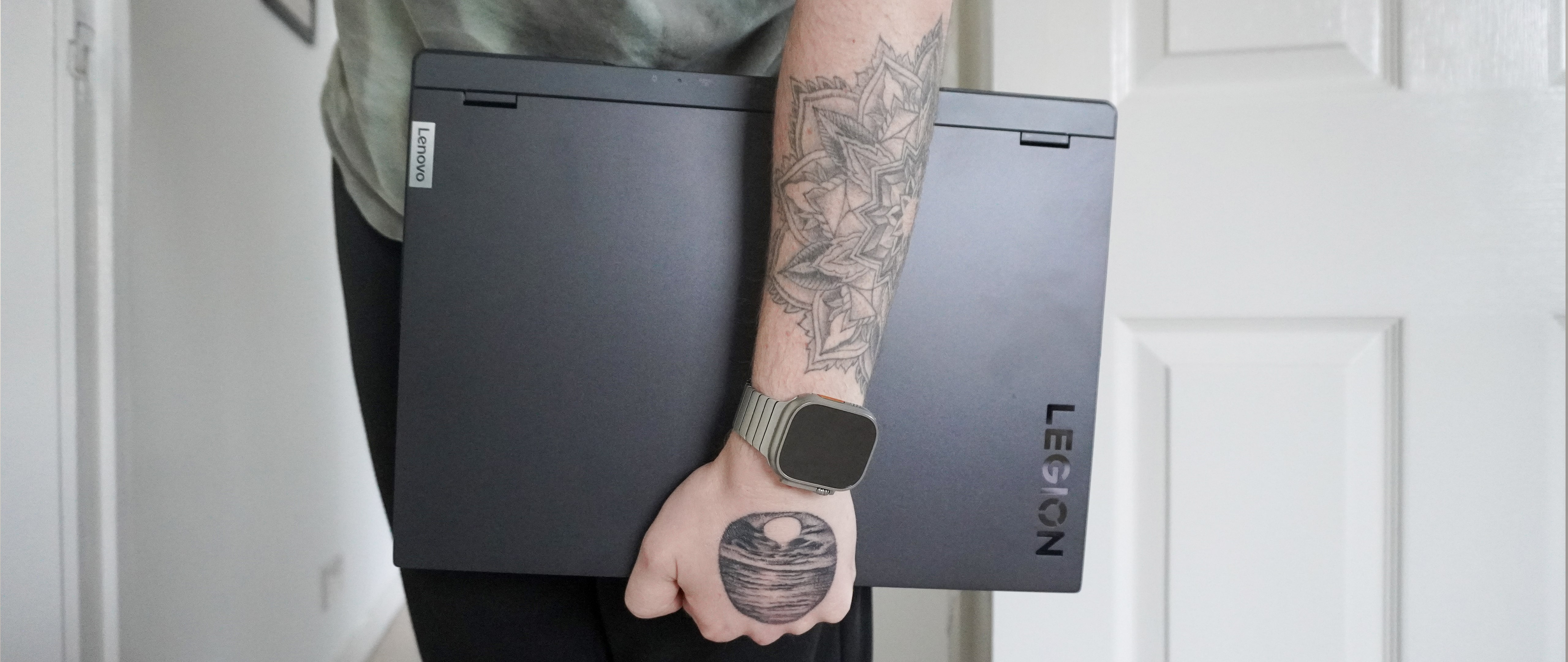Tom's Guide Verdict
The Lenovo Legion Pro 7i is simply a top notch gaming laptop — no RGB tricks or design gimmicks. Provided you’ve got some headphones to block out the fans that can get rather loud, you’re bagging impressive RTX 4070 performance packaged in a premium aesthetic.
Pros
- +
Gorgeous display
- +
Sleek, utilitarian design
- +
Plenty of I/O (and nice placement)
- +
Impressive thermal management
- +
Nice RTX 4070 power
Cons
- -
Some inconsistent frame rate performance
- -
Webcam = potato
- -
Fans can get quite loud
- -
Underwhelming battery life
Why you can trust Tom's Guide
The Lenovo Legion Pro 7i ditches the gimmicks and just gives you a banger of a 16-inch mid-range gaming laptop — provided you can look past the slightly steep price when compared to the competition.
Whether it’s the upmarket aesthetic, that gorgeously colorful panel with buttery smooth 240Hz refresh rate, or the power-packed combination of 13th Gen Intel Core i9 and RTX 4070, it’s hard to not be impressed by this machine. That’s before talking about all the things Lenovo is well known for nailing over the years; from the fantastic tactile keyboard to the rock-solid build quality.
There are some issues here that we can’t ignore, such as the disappointing webcam, the (unsurprisingly) underwhelming battery life, and the fans that can sound like the equivalent of a plane taking off.
But if you price these into your purchase, you’re in for a treat. Allow me to explain why.
Lenovo Legion Pro 7i Gen 8: Specs
| Header Cell - Column 0 | Lenovo Legion Pro 7i (starting) | Lenovo Legion Pro 7i (tested) |
|---|---|---|
| Price | $1,799 | $1,991 |
| Display | 16-inch, 1440p, 240Hz, IPS | 16-inch, 1440p, 240Hz, IPS |
| CPU | Intel Core i9-13900HX | Intel Core i9-13900HX |
| GPU | Nvidia GeForce RTX 4070 | Nvidia GeForce RTX 4070 |
| RAM | 16GB | 32GB |
| Storage | 512GB | 1TB |
| Ports | 3x USB-A, 1x USB-C, 1x HDMI 2.1, 1x Ethernet, 1x 3.5mm audio jack | 3x USB-A, 1x USB-C, 1x HDMI 2.1, 1x Ethernet, 1x 3.5mm audio jack |
| Battery life | n/a | 5 hours 46 mins (tested) |
| Dimensions | 14.3 x 10.3 x 1 inches | 14.3 x 10.3 x 1 inches |
| Weight | 6.1 pounds | 6.1 pounds |
Lenovo Legion Pro 7i Gen 8: Price and configurations
- Under $2,000 for an RTX 4070 machine is a competitive price
The Lenovo Legion Pro 7i we tested comes in at $1,991, but it starts at $1,799 and (for those with deep pockets), you can trick it out with an RTX 4090 and take that cost all the way up to $2,773.
Under the hood of this spec, you’ll find the Intel Core i9-13900HX CPU, Nvidia GeForce RTX 4070 GPU, 32GB DDR5 RAM and a 1TB SSD. This price puts it in interesting water with impressive value for money. For example, the compact beast that is the Razer Blade 14 comes in at over $700 more, and a similarly specced Alienware x16 for $300 less.
So we can answer two questions here, given the spec of these other two competitors that we tested (the RTX 4070 of Razer Blade 14, and the 4080-armed x16 that comes in at $2,949). Does this lower price tag mean any sort of compromise on the internals? And when compared to an RTX 4080, should you invest more in the improved GPU or settle?
Get instant access to breaking news, the hottest reviews, great deals and helpful tips.
Lenovo Legion Pro 7i Gen 8: Design
- Refined, stylish design without too much RGB
- Slightly heavy for a gaming laptop
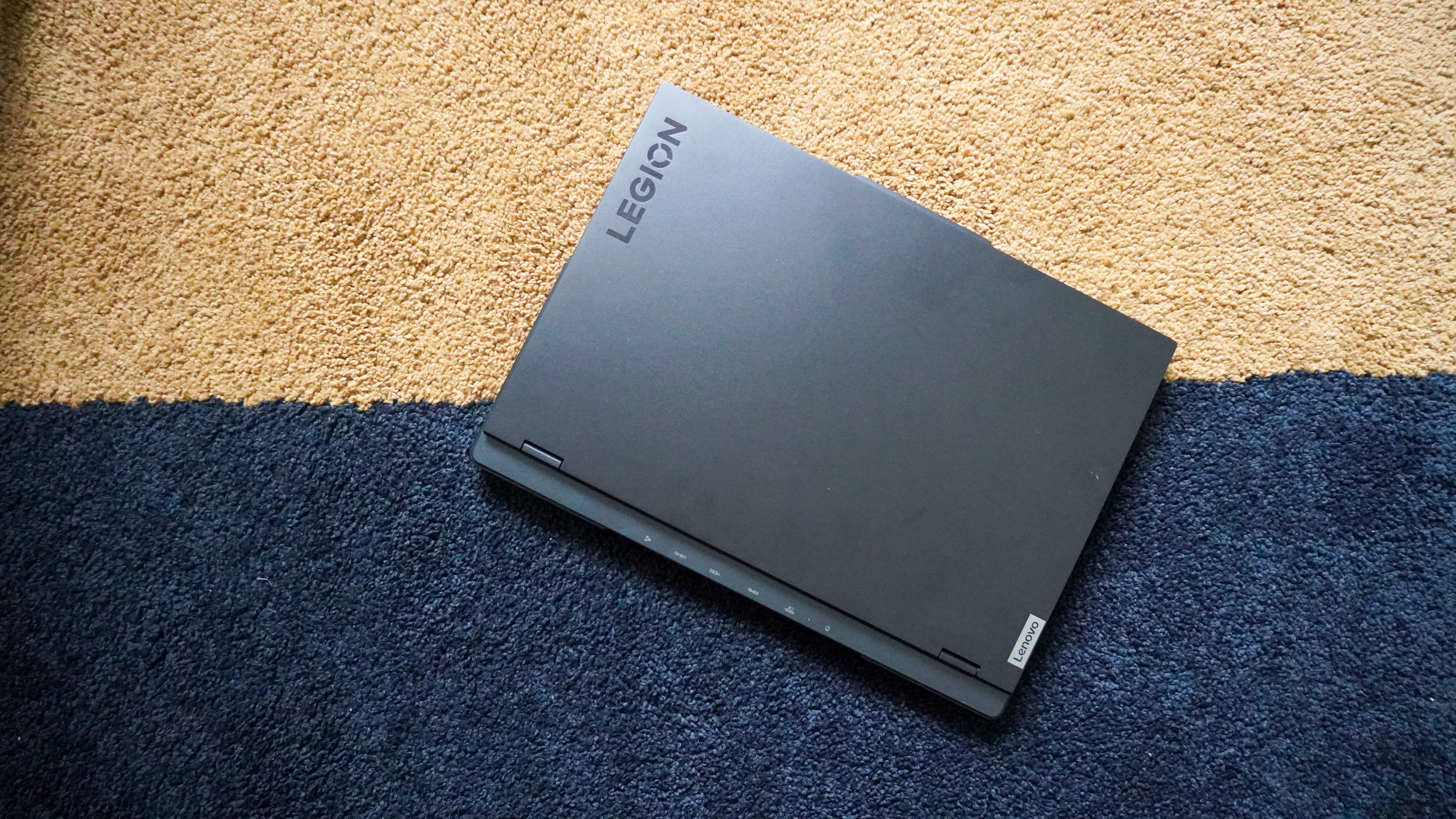
Unlike a couple of my colleagues, I find the angular, RGB-laden gaming laptop aesthetic to be a little cringeworthy. Ultimately, it comes down to what I’d feel comfortable taking out of my backpack when out and about, and that’s why I’m a big fan of the refined stylings of the Legion Pro 7i.
The frame is kept stylish, from its gunmetal gray metallic lid to the premium plastics adorning the remainder of this frame — it helps provide a premium look and feel from every angle. And it’s pretty sleek (for a gaming laptop) when it comes to its dimensions and weight, too.
| Laptop | Dimensions | Weight |
|---|---|---|
| Lenovo Legion Pro 7i (Intel Core i9-13900HX, 32GB RAM, 1TB SSD) | 14.3 x 10.3 x 1 inches | 6.1 pounds |
| Razer Blade 14 (AMD Ryzen 9 7940HS, 16GB RAM, 1TB SSD) | 12.6 x 8.7 x 0.7 inches | 3.9 pounds |
| Alienware x16 (Intel Core i9-13900H, 32GB RAM, 1TB SSD) | 14.3 x 11.4 x 0.7 inches | 6 pounds |
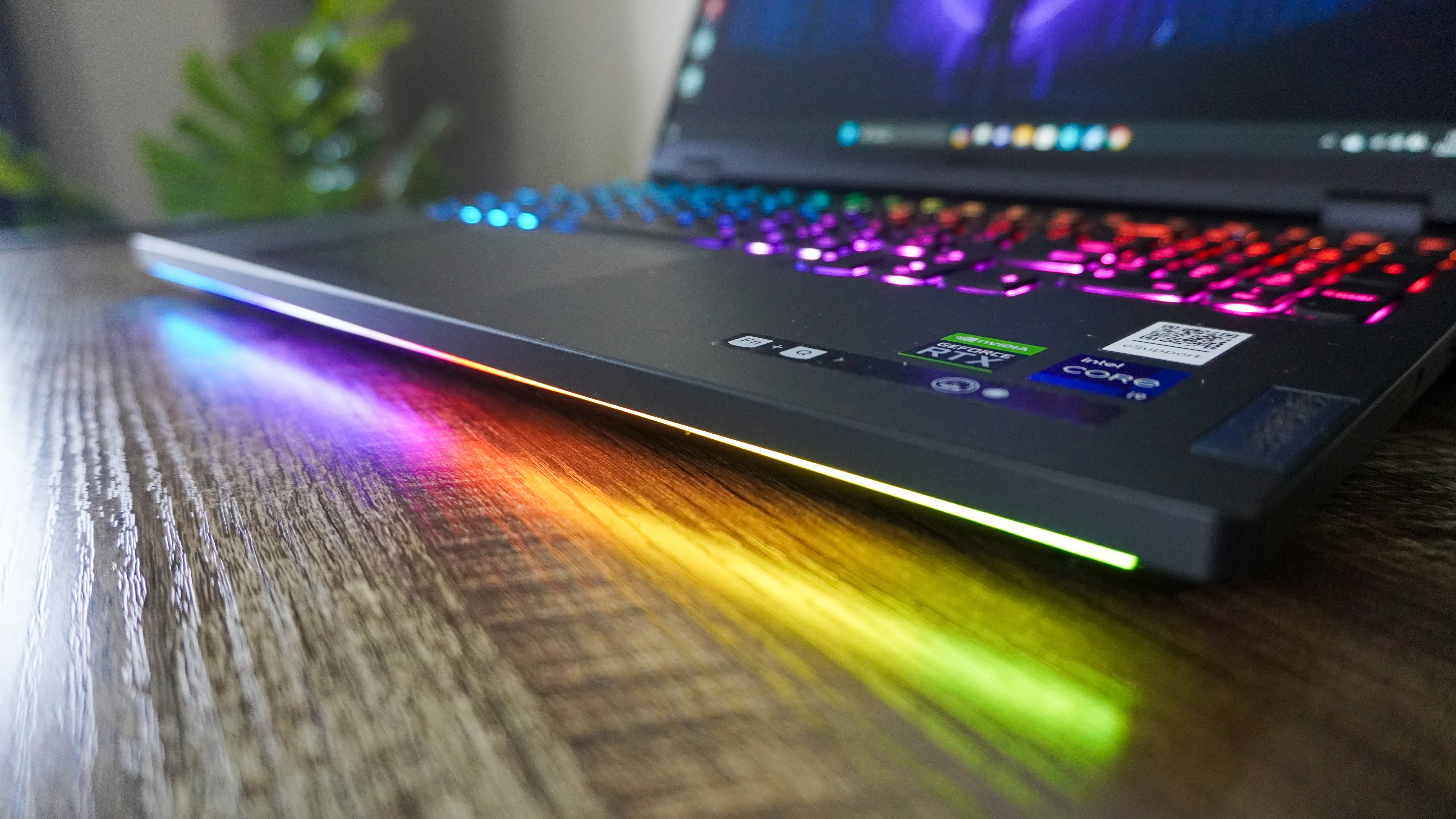
Of course, to the flashy lights fandom, there is a strip of RGB peeking out on the bottom that can provide as wild of an underglow as you’d want (personally, I keep it off), and a keyboard that can pulse through all the colors you wish or stay a single shade. But luckily for me, it’s less of a 90s rave and more of a subtle pop of color.
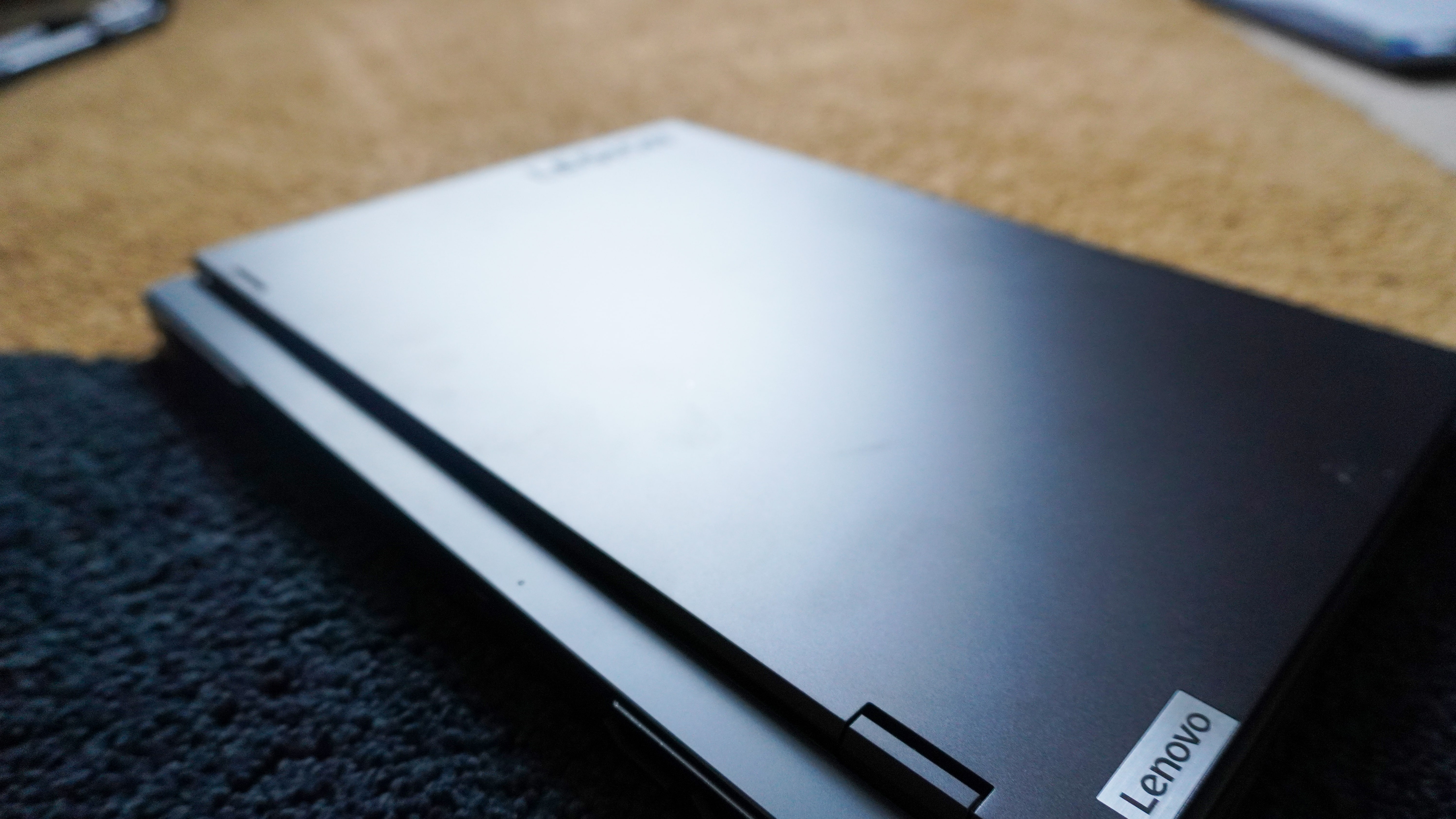
Oh, and speaking of opening it up, the protrusion of the webcam bump and smooth hinge makes this a cinch to open with one hand. None of its design in both form or function screams “I’m a gamer with Mom’s credit card.” It’s well-thought out and sensible — nice and refined. That could be viewed by some as boring, but honestly, I’m all for it.
Lenovo Legion Pro 7i Gen 8: Ports
- All the ports you’d need, and nothing more.
- Nice arrangement round the back for desk placement.
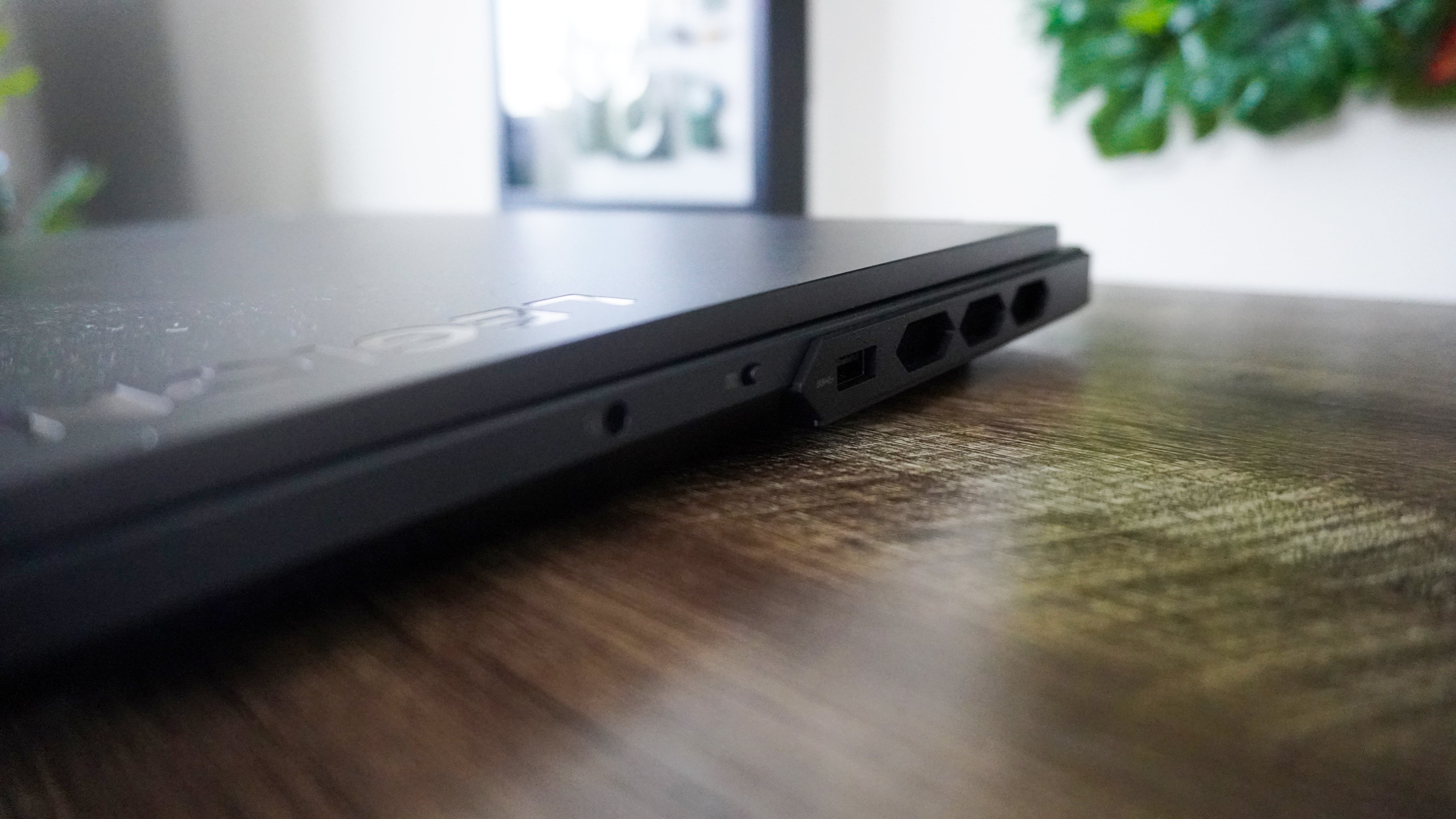
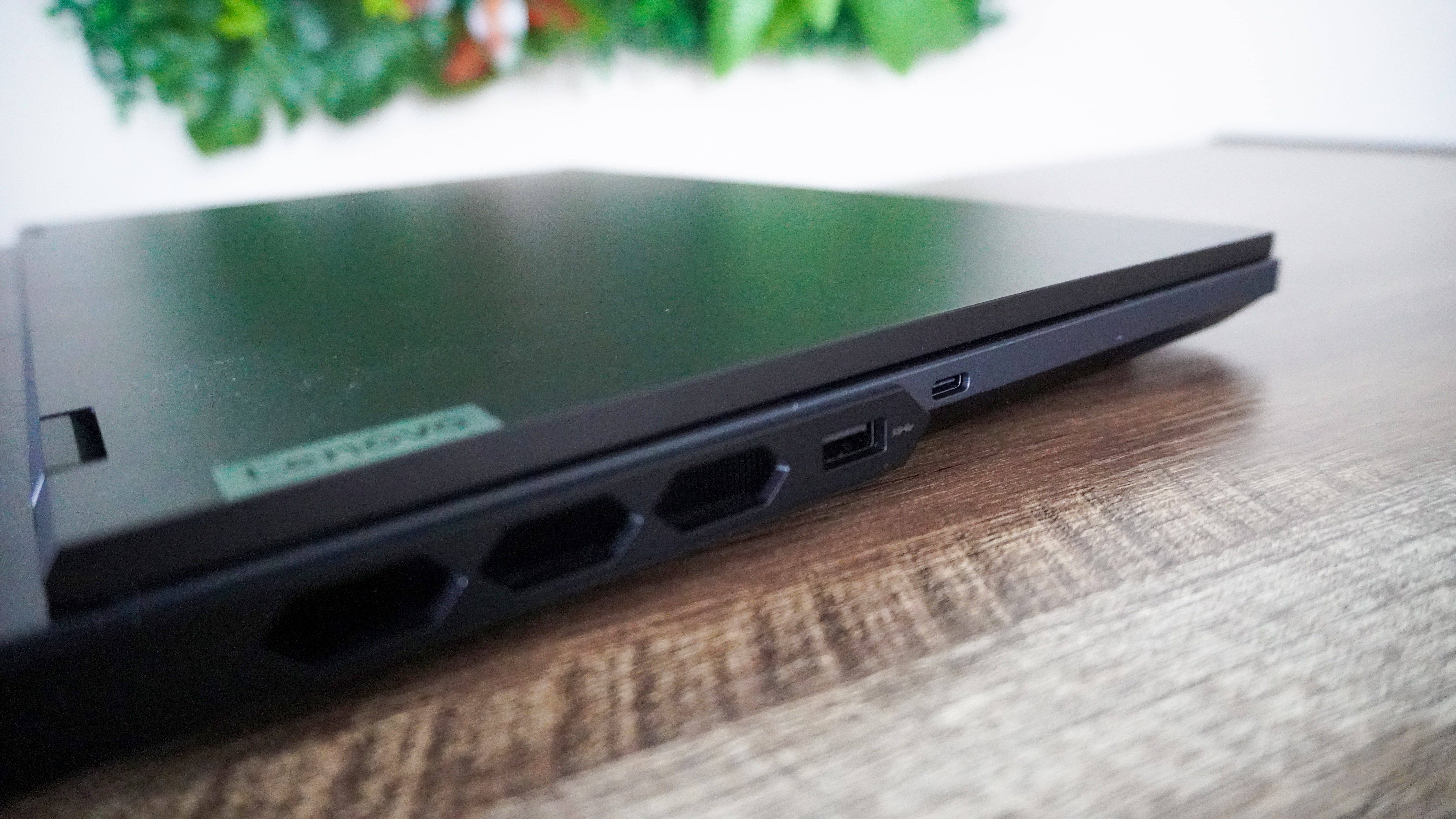
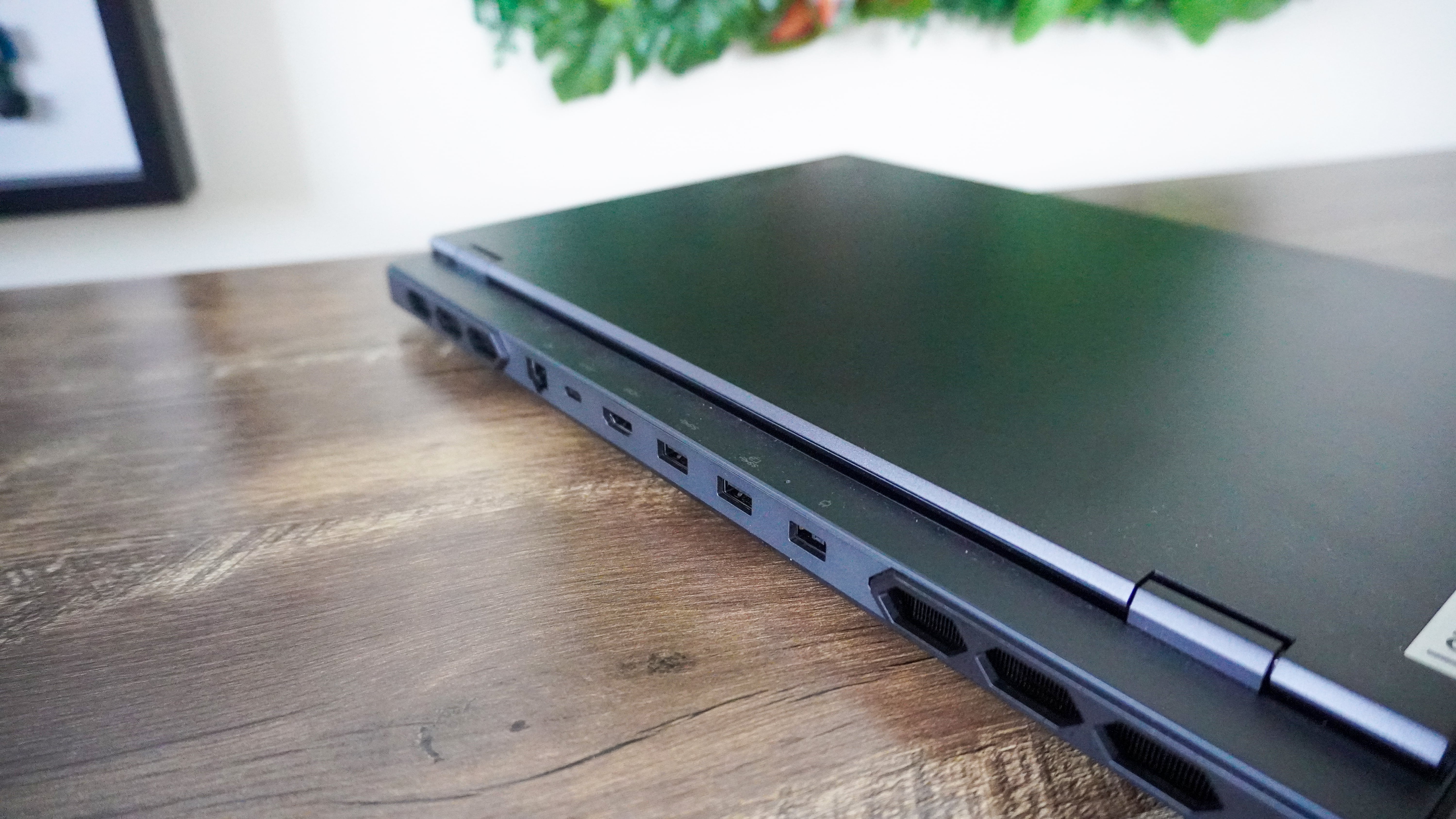
Lenovo’s Pro 7i packs all the ports you’d need to get your game on. That includes a USB-A 3.2 Gen 1 port, E-shutter switch, and 3.5mm combo jack on the right, and Thunderbolt 4 alongside USB-C 3.2 Gen 2 on the right.
The main course is arranged nicely around the rear, which is perfect for those who may be plugging this system into a home-based setup. In a row, you’ll find the power input, two USB-A 3.2 Gen 1, one USB-C 3.2 Gen 2 with DisplayPort 1.4 support, HDMI 2.1, and Ethernet.
For a varied workload like mine, it would have been great to see Lenovo add a SD card slot for transferring photos. But for most productivity needs, as well as gaming, this selection is more than enough.
Lenovo Legion Pro 7i Gen 8: Display
- Impressively detailed, colorful and buttery smooth
- Nice and bright for difficult lighting conditions
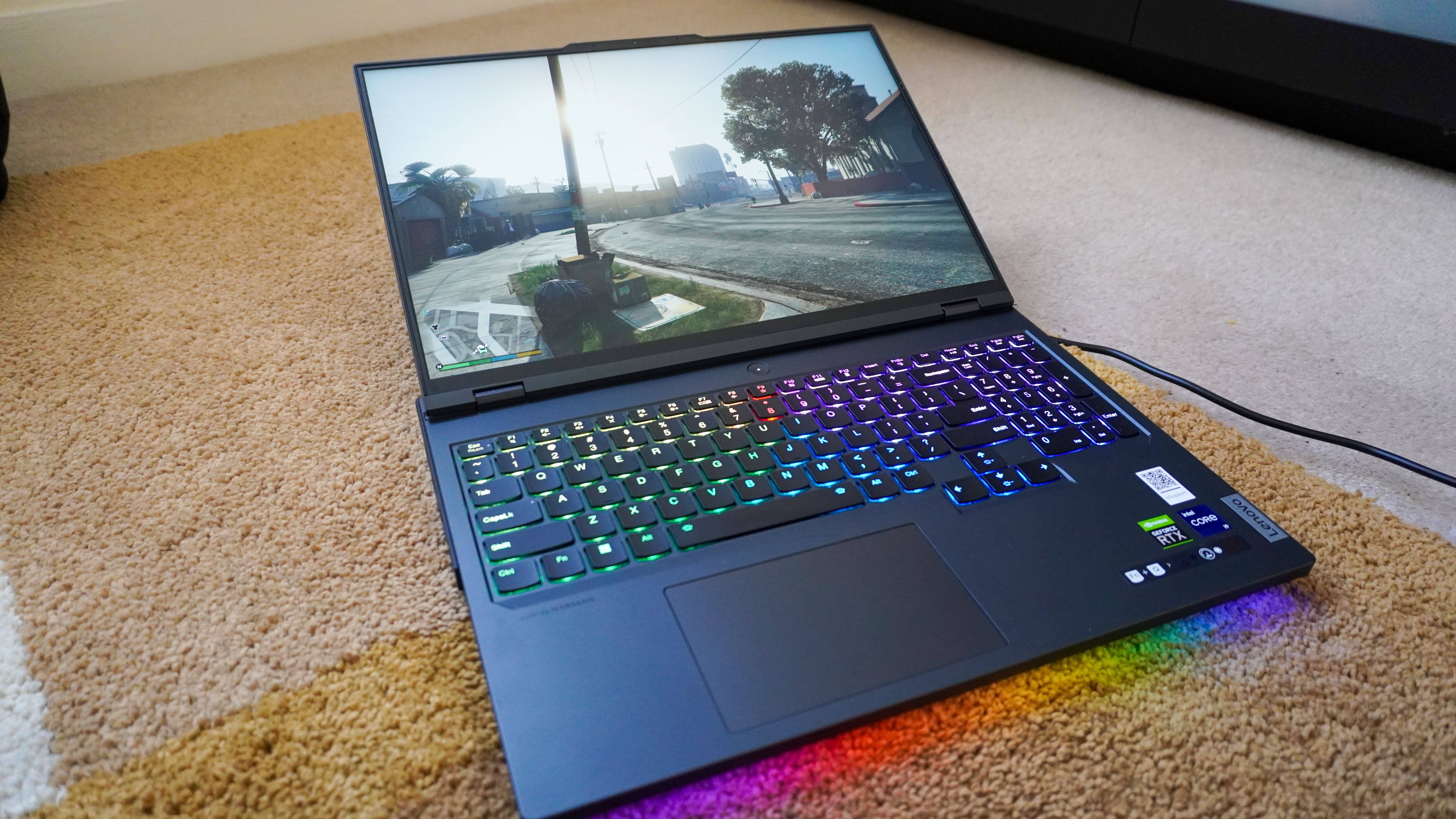
Now, let’s talk about that 16-inch IPS panel with QHD resolution and 240Hz refresh rate — it’s quite the looker. Visuals are both bright and colorful, with a nice contrasty depth that defies what you’d expect to see on a screen that isn’t OLED, which all moves along oh-so-smoothly.
The numbers back this up too:
| Laptop | Display average brightness (nits) | sRGB color gamut (%) | Delta-E color accuracy (smaller number is better) |
|---|---|---|---|
| Lenovo Legion Pro 7i | 488.2 | 110.30% | 0.31 |
| Razer Blade 14 | 464.6 | 161.30% | 0.07 |
| Alienware x16 | 301.8 | 106.30% | 0.21 |
While it’s not the heavy hitter in color like the Razer Blade 14 is, this is the brightest of the three and offers decent vividity for games, and decent accuracy for confidence to do some prosumer-level photo editing.
Two games highlight the strengths of this panel for me. First, dipping into F1 23 demonstrates that impressively high frame rate that keeps up with the blistering 200 MPH pace as you blaze along the vivid greenery of grass alongside the track and fans wearing a whole host of multi-colored shirts. In fact, it got so distracting that I forgot my brake point and went careening into a wall, so be warned!
Second is Alien Isolation — a comparative oldie but goodie when it comes to pants-wetting horror. The contrast ratio of IPS displays are not necessarily the best when it comes to horror titles with plenty of dark scenery like this. However, the impressive HDR quality of this screen really adds a depth to each scenario for building that true tension of evading the titular Xenomorph.
Lenovo Legion Pro 7i Gen 8: Keyboard and touchpad
- Lenovo’s lineage in making great keyboards continues here
- A spacious touchpad with a satisfyingly tactile click
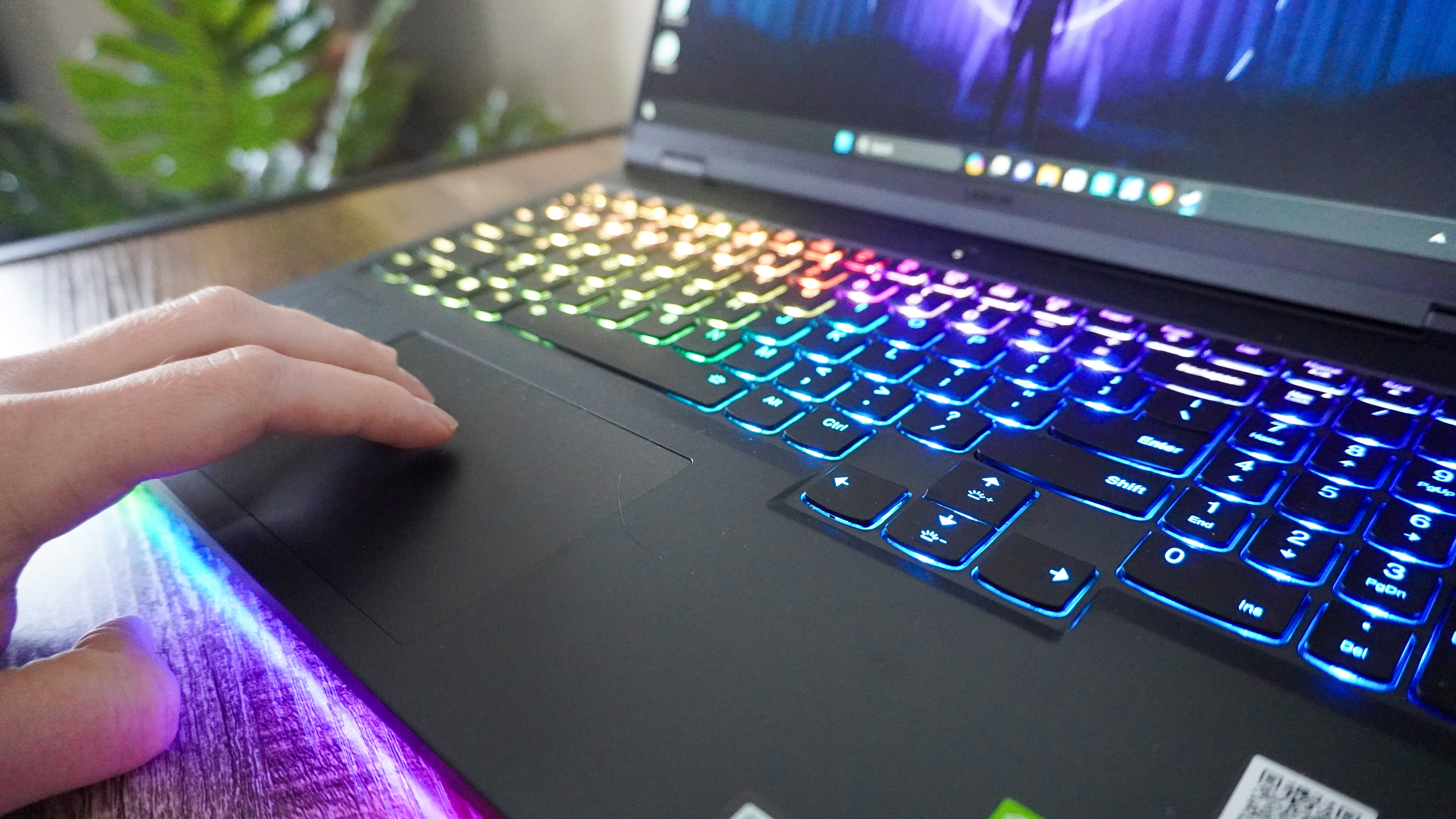
Anytime I ask my more casual tech friends about Lenovo, the usual answer is “oh, the ones who make the boring-looking laptops for work with the good keyboard.” While I would question the boring part (I’d describe the company’s business laptop aesthetic as utilitarian), they are certainly right on the latter. Nothing quite matches up to the ergonomic feel of a Lenovo laptop keyboard, and the Legion Pro 7i is no different.
Each key has a nice subtle dish that your fingers fall gracefully into, and the 1.5mm of travel gives each key an impressive depth with a tactile springiness to each tap that makes every word you write feel impactful, alongside providing a nice response while gaming.
Then, we turn our attention to the touchpad, which at 4.8 x 3 inches, provides a more generous canvas for your fingers than most gaming laptops, along with a pleasingly tactile snap to every mouse click.
Lenovo Legion Pro 7i Gen 8: Audio
- Dual 2W Harman-tuned speakers with decent clarity
- Not much bass, but zero distortion at high volumes
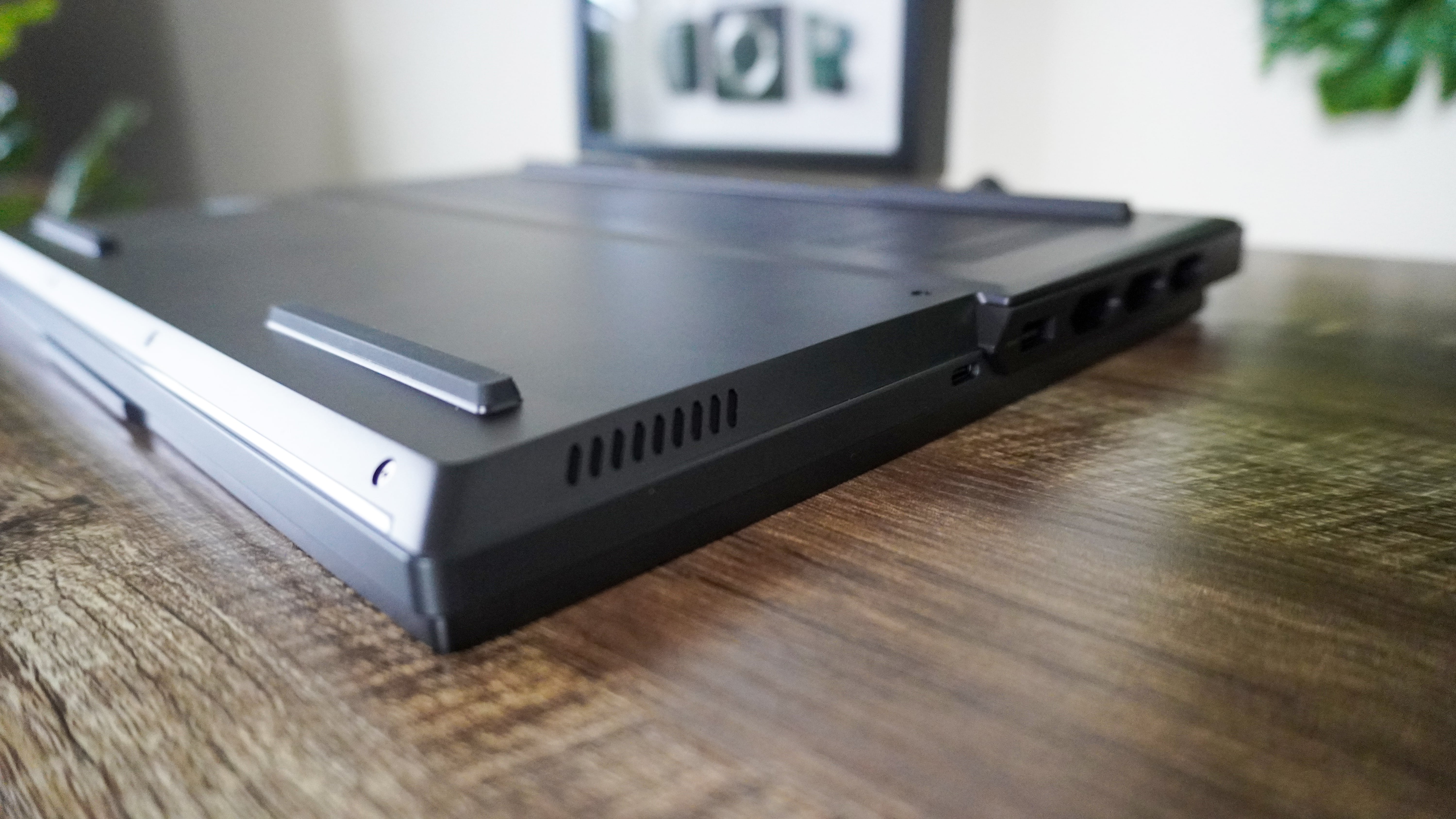
Don’t expect anything mighty when it comes to sound output from this dual 2S Harman super linear system with Nahimic Audio. However, what you are getting is decent clarity in the mids and the highs with zero distortion, even at the highest volumes.
The tinniness does mean you’re not getting the fullest extent of the 808 bass in Mac Miller’s “2009,” but the more delicate details at other levels are nicely preserved. This is also reflected in gameplay too, with the crunchy roar of cars in Forza Motorsport maintained with no crackling at high volumes, and the finer details of tyre squeals for detecting oversteer shine above it in a nice mix.
But be warned, those fans can kick up a bit of a storm. Of course, the solution to this problem is snapping up one of the best gaming headsets, but this is just something to watch out for when gaming on the speakers alone.
Lenovo Legion Pro 7i: Gaming performance
- RTX 4070 GPU packs a bunch of power across AAA titles — especially with DLSS 3.0
- But there are some inconsistencies in frame rates across games
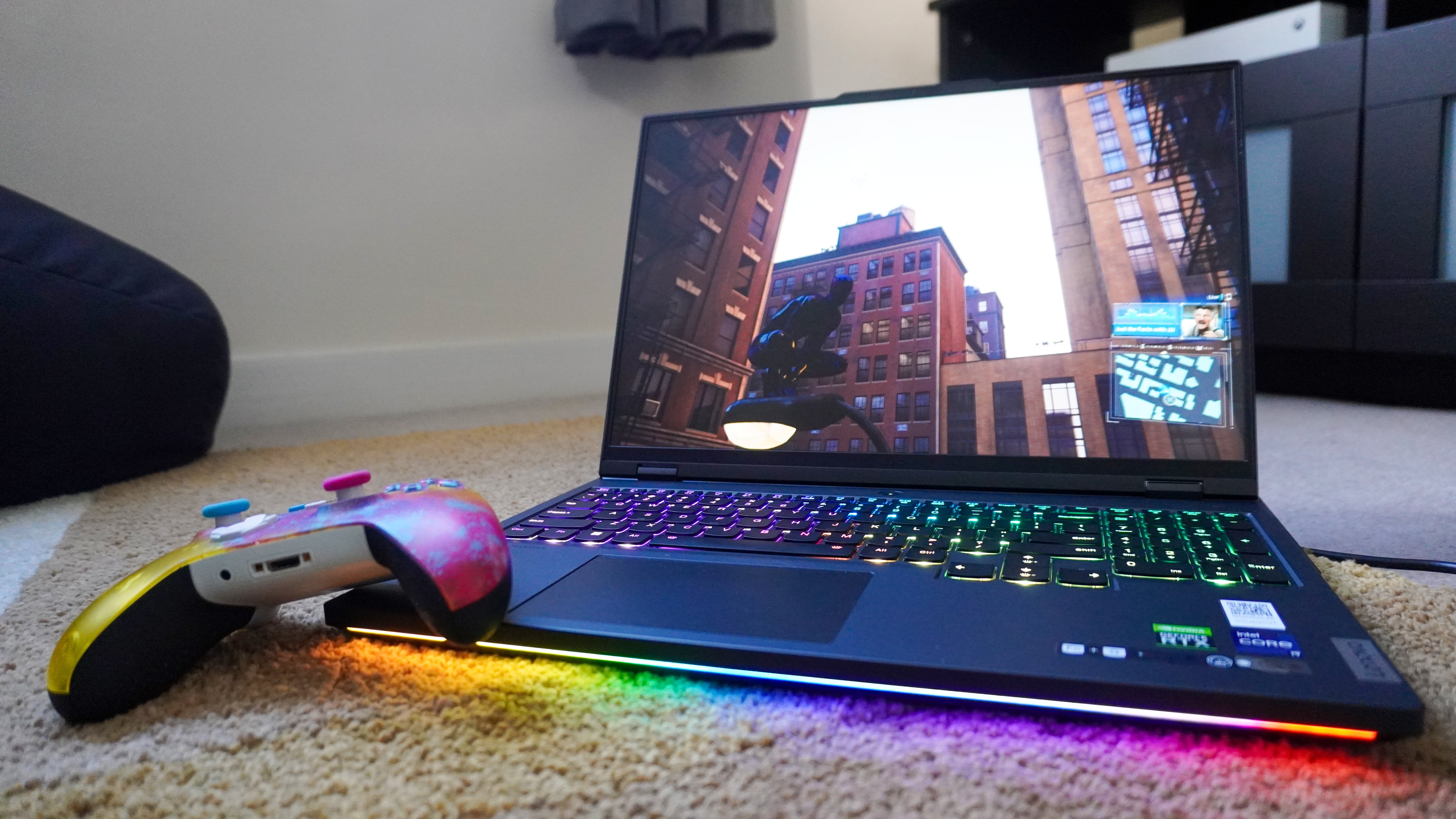
Let’s be honest, most of you probably scrolled to this bit to see how the Pro 7i performs. The answer is a complicated one, but summed up in a few words, this laptop proved to me that not every gaming laptop with the same spec is the same.
The RTX 4070 GPU is crammed with 12GB of GDDR6 video memory — the same as you’d find in the Razer Blade 14. The former has 150W of total graphics power (TGP), whereas the smaller latter has 140W. Translation: more power means more frames, right? Well, not exactly.
| 3DMark Benchmark | Lenovo Legion Pro 7i (RTX 4070) | Razer Blade 14 (RTX 4070) | Alienware x16 (RTX 4080) |
|---|---|---|---|
| Fire Strike | 23860 | 26443 | 30580 |
| Time Spy | 11169 | 11021 | 16546 |
| Fire Strike Ultra | 6406 | 6802 | 10467 |
| Port Royal (Ray Tracing) | 6531 | 7001 | 10805 |
As a frame of comparison, the Alienware x16’s RTX 4080 does trounce the Pro 7i across both high resolution textures, physics generation and ray tracing. But more intriguingly, the higher wattage pumping through Lenovo’s machine doesn’t quite match up in most of these tests compared to the Razer Blade 14.
The same can be said for most of our game testing too, as frame rates are still more than enough for most gamers, but Razer still pulls ahead in most of our game comparisons.
| Gaming benchmark | Resolution | Lenovo Legion Pro 7i | Razer Blade 14 | Alienware x16 |
|---|---|---|---|---|
| Grand Theft Auto V | 1080p | 88.2 FPS | 99.6 FPS | 154.2 FPS |
| Row 1 - Cell 0 | QHD+ | 67.4 FPS | 55.4 FPS | 87.7 FPS |
| Far Cry 6 | 1080p | 97 FPS | 85 FPS | 97 FPS |
| Row 3 - Cell 0 | QHD+ | 67 FPS | 68 FPS | 86 FPS |
| Red Dead Redemption 2 | 1080p | 69.1 FPS | 73.4 FPS | 99.6 FPS |
| Row 5 - Cell 0 | QHD+ | 42 FPS | 44.6 FS | 63.3 FPS |
Once again, the margins are minor, and I’d honestly say it’s not worth the additional $700 for that small bump in performance. But I am curious to see why that increased wattage doesn’t translate into improved gameplay.
Regardless, this kind of power at this outlay does offer a vastly more impressive price-to-performance ratio than both the Razer and Alienware when taking an average of QHD resolution frame rates:
- Lenovo Legion Pro 7i: $32.38 per frame
- Razer Blade 14: $48.21 per frame
- Alienware x16: $35.43 per frame
Plus, we haven’t even got into the wonderful world of DLSS 3.0 yet, which saw my total frame rate in Cyberpunk 2077 go up from a mere 16.7 fps in QHD to a wonderfully playable 67.82 fps. That’s a huge improvement thanks to AI frame generation.
Lenovo Legion Pro 7i: General performance
- The 13th Gen Intel Core i9-13900HX CPU is a screamer
- SSD speed beats out the competition
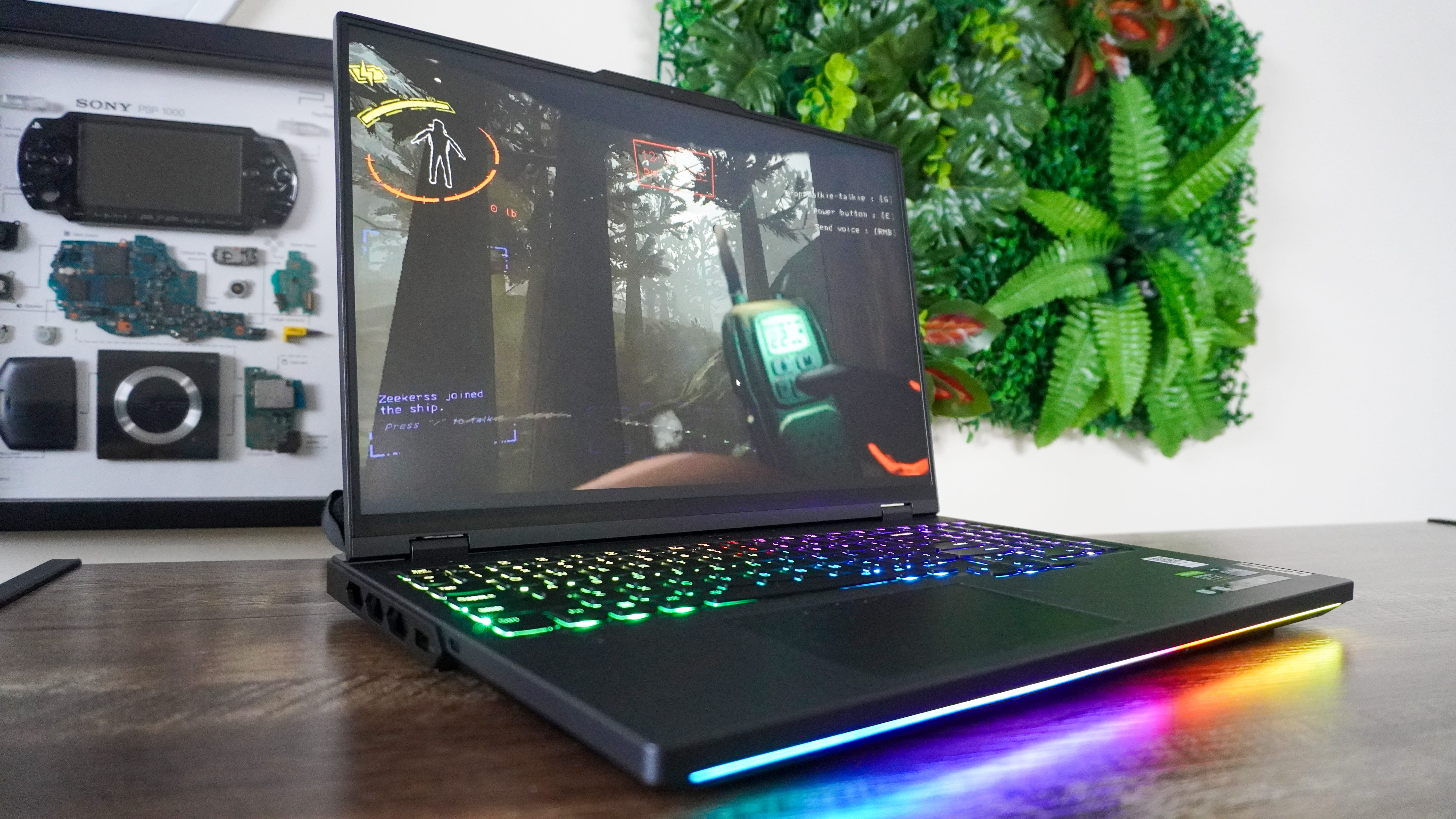
Moving onto the rest of the internals, you’ll find an Intel Core i9-13900HX CPU, 32GB of DDR5 RAM and a 1TB SSD, and the results, quite frankly, are beastly.
| Laptop | Geekbench 6 single-core | Geekbench 6 multicore | Handbrake time | 25GB file copy time | Transfer rate (MBps) |
|---|---|---|---|---|---|
| Lenovo Legion Pro 7i | 2855 | 14740 | 3:31 | 12.7 seconds | 2115.1 |
| Razer Blade 14 | 2671 | 11880 | 4:45 | 21.8 seconds | 1230 |
| Alienware x16 | 2719 | 14815 | 4:50 | 14 seconds | 1913.6 |
As you can see, the Geekbench numbers tell a good story when it comes to single and multicore performance, but the real beauty becomes apparent in that compute performance of transcoding a 4K video to 1080p in just over three and a half minutes, and a seriously fast SSD speed. This is going to make those prosumer tasks simply fly by.
Combine it altogether in real-world use, and you’ll find this simply zips through a ton of tasks simultaneously. Even in my most intense testing — 40+ Chrome tabs with 10 4K videos playing, editing a massive RAW photo in Photoshop, and Forza Motorsport’s benchmark running in the background, there wasn’t a single bit of stutter or slowdown.
While gaming performance doesn’t necessarily hold up to the Razer Blade 14, the Pro 7i makes up for it with blistering SSD speeds and a mighty CPU.
Lenovo Legion Pro 7i: Battery life and heat
- The battery is big, but still underwhelming for a gaming laptop
- But the Legion Pro 7i has mightily impressive thermal management
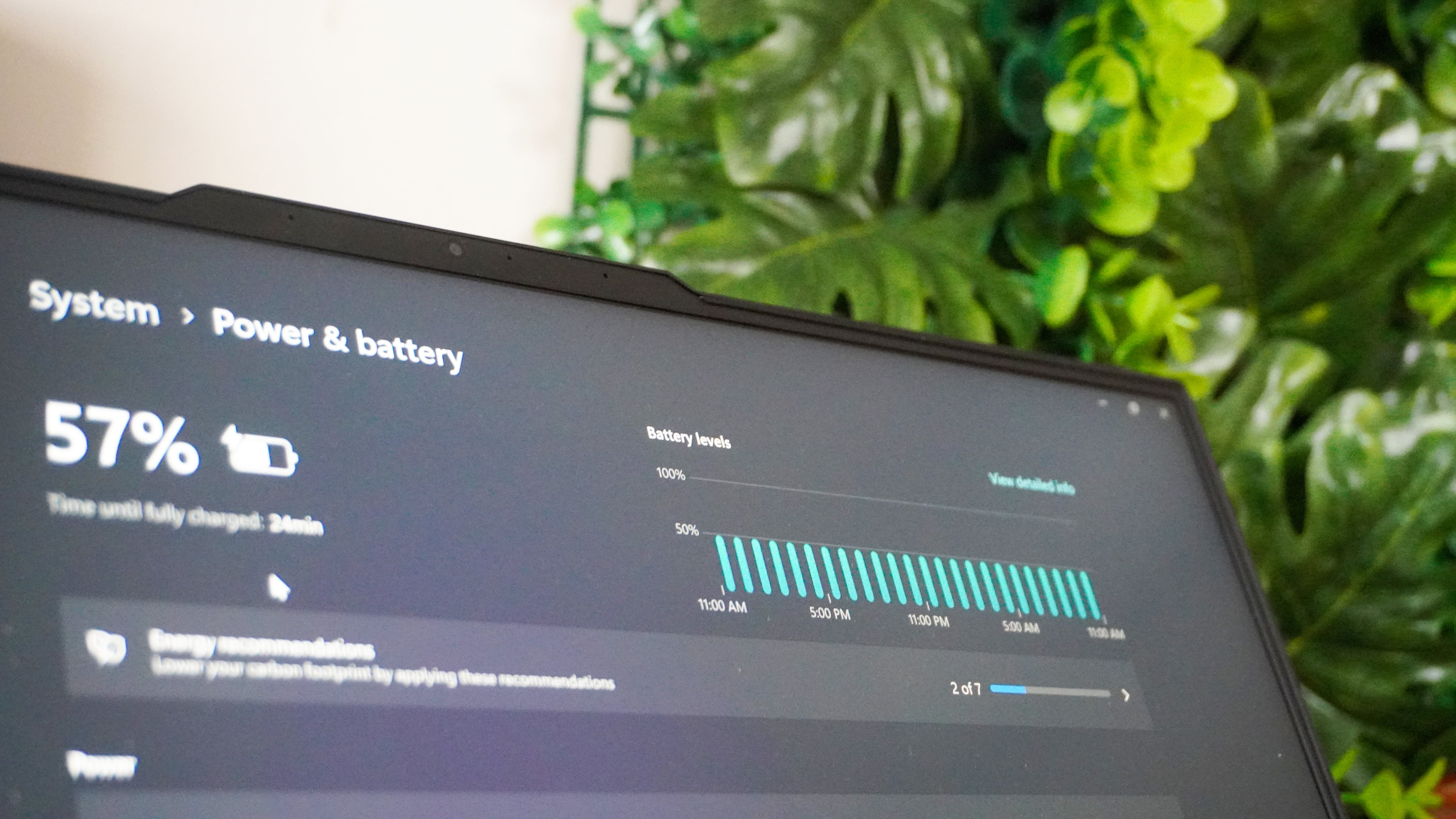
At the maximum battery capacity you can take onto a flight, the 99.99 Wh cell should do well. However, it’s a little underwhelming, and quite frankly embarrassed by the Razer Blade 14.
| Laptop | Battery life (web surfing hh:mm) | Battery life (Gaming PCMark 10 hh:mm) |
|---|---|---|
| Lenovo Legion Pro 7i | 05:46 | 01:07 |
| Razer Blade 14 | 08:34 | 01:46 |
| Alienware x16 | 05:37 | 01:20 |
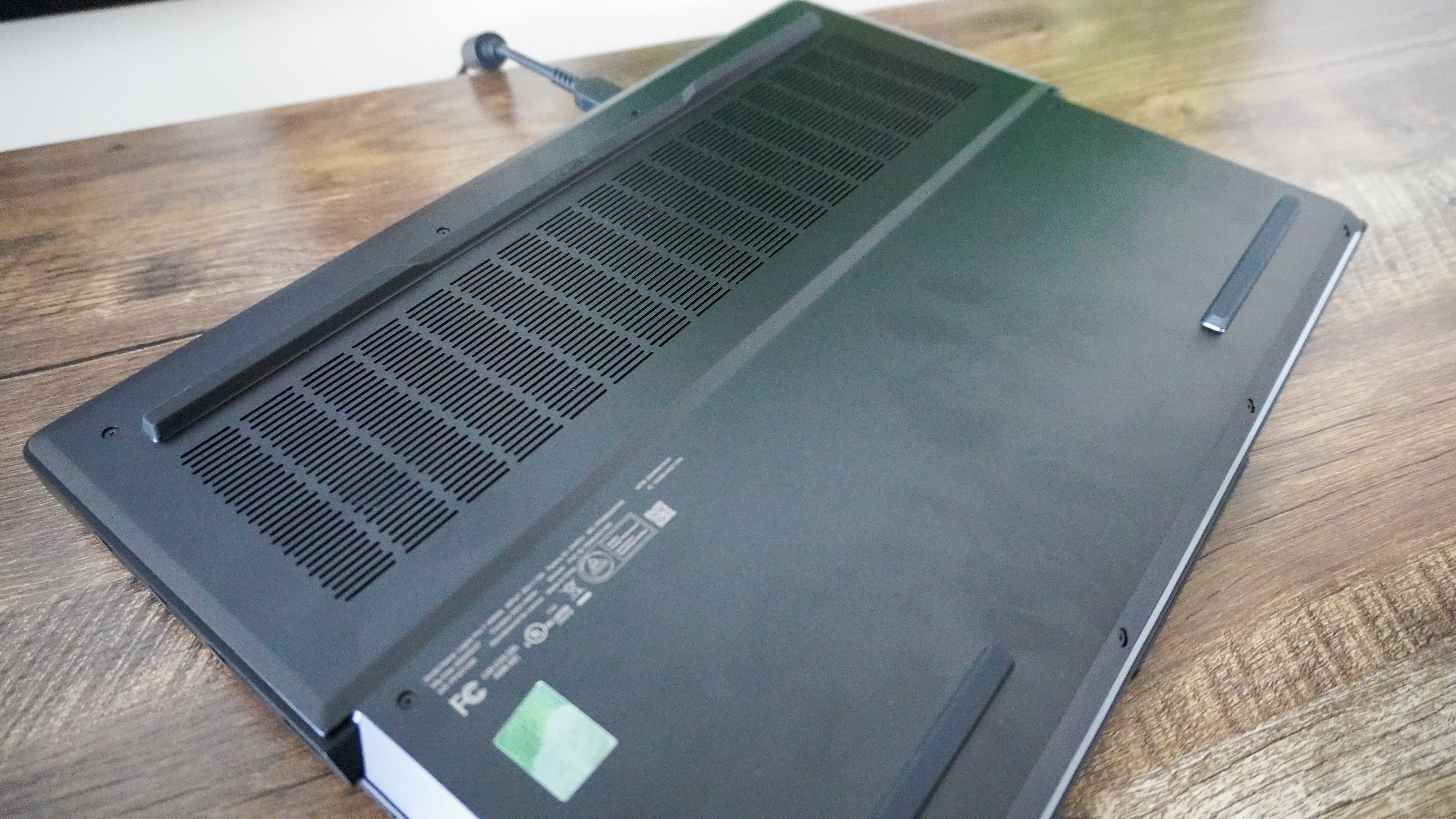
Just make sure you’re near a power outlet when using this power-hungry beast, but then again, most of you will be for peak gaming performance. Fortunately, when you do put this machine under intense pressure, it stays cooler than the Fonz.
| Laptop | Temperature (Touchpad) | Temperature (G/H keys) | Hottest surface & temperature |
|---|---|---|---|
| Lenovo Legion Pro 7i | 76.5 degrees | 92.5 degrees | 110.5 degrees (underside, near vents) |
| Razer Blade 14 | 86 degrees | 108 degrees | 125.3 degrees (underside, near hinge) |
| Alienware x16 | 78.4 degrees | 108 degrees | 129.7 degrees (rear underside) |
While Alienware’s laptop is sure to burn your crotch, and the Razer Blade 14 could easily be its own heat source for the living room, the Pro 7i has zero problems with thermal throttling or intense heat. While the fans are indeed loud, that CPU and GPU combo continue spinning without a single bit of pressure.
Lenovo Legion Pro 7i: Webcam
- 1080p doesn’t always mean good
- No IR for Windows Hello
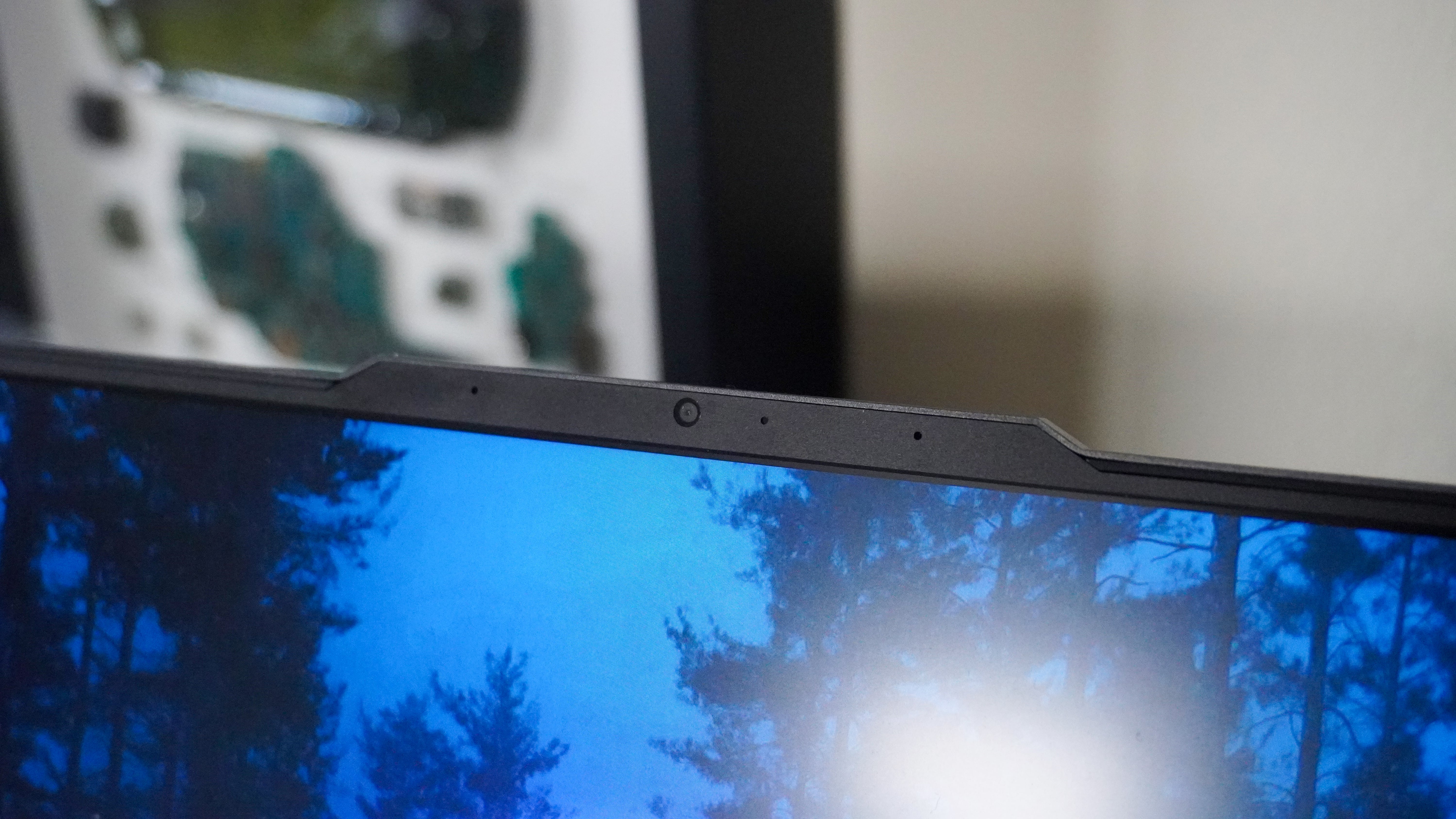

Let’s be honest — most laptop webcams are potatoes. That’s just an inevitable fact that streamers and users who want a little more clarity work around by picking up a great webcam.
When I fired up the 1080p shooter on the Pro 7i, it’s decent as far as gaming laptops go, but the pictures produced by this tiny sensor are still pretty fuzzy with a lack of reactivity to challenging lighting. Plus, with no IR sensor for speedy Windows Hello login, it’s not the most useful potato either.
But yet, I can’t really knock a gaming laptop for not having a great webcam. It’s kind of like criticizing a supercar for its lack of space in the trunk — that’s not what you’re buying it for.
Lenovo Legion Pro 7i: Verdict
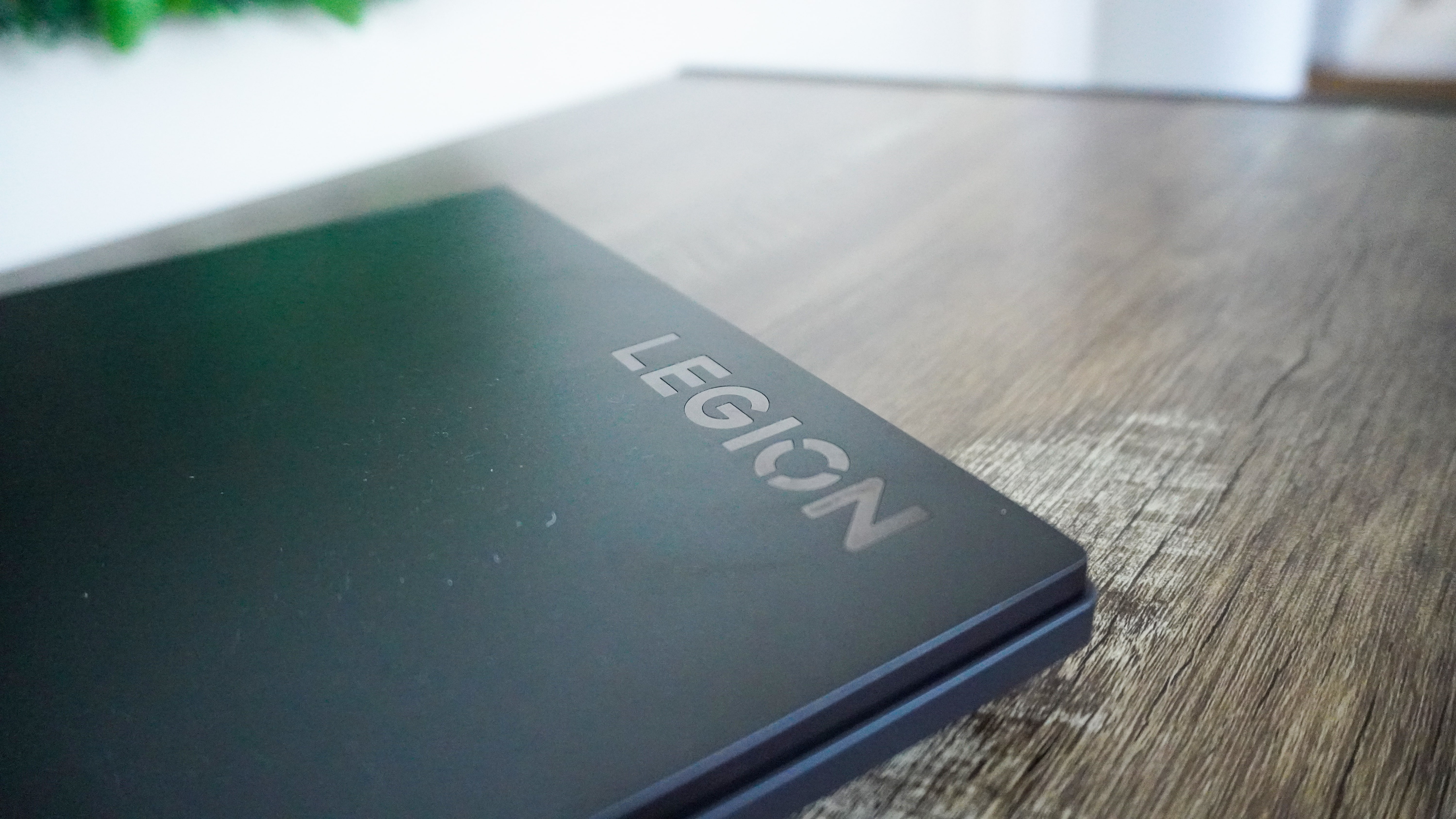
The Legion Pro 7i is one of my favorite gaming laptops, and easily one of the best you can buy right now — packing plenty of power alongside a vivid display into a premium, durable frame.
Not only that, but the keyboard is a joy to type on, the touchpad is surprisingly satisfying to use given my experience with spongy gaming laptop pads in the past, and that 240Hz refresh rate on the screen is great for your eSports needs.
Add to that the RTX 4070 performance paired with that speedy Intel Core i9 CPU, and the ton of I/O on here, and this is a solid package. That’s not to say there aren't some flaws: the webcam isn’t that great, and the fans whir up a storm.
But at its core, this is both a performant laptop for work by day (with the refined aesthetic to boot), and a beasty gaming system by night.

Jason brings a decade of tech and gaming journalism experience to his role as a Managing Editor of Computing at Tom's Guide. He has previously written for Laptop Mag, Tom's Hardware, Kotaku, Stuff and BBC Science Focus. In his spare time, you'll find Jason looking for good dogs to pet or thinking about eating pizza if he isn't already.
